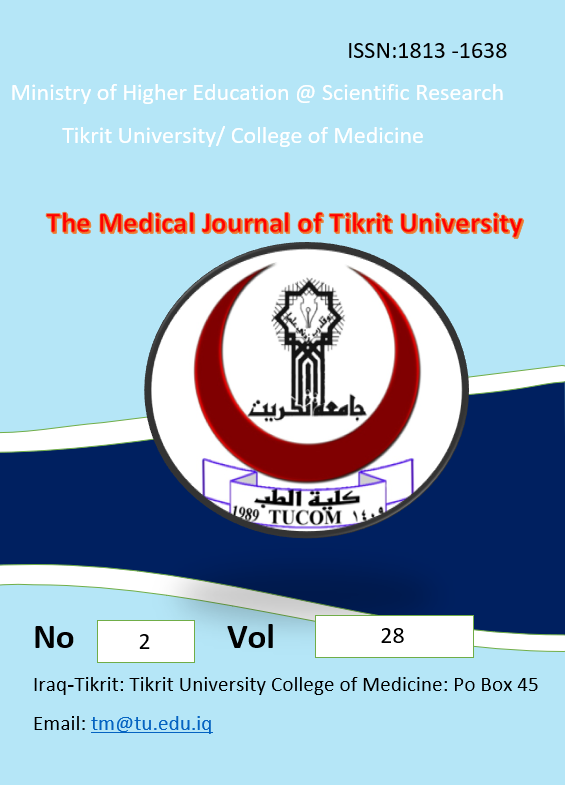Causes and Outcome of Relaparotomies for Warfare Penetrating Abdominal Injuries
Keywords:
Penetrating abdominal injuries, relaparotomy, postlaparotomy, complicationsAbstract
Background: Worldwide the incidence of penetrating abdominal injuries, including warfare injuries, is increasing and in most cases exploratory laparotomy is warranted. A single laparotomy may not be sufficient and a relaparotomy sometimes may be needed to deal with these patients.
Aim of the study: This study was done to evaluate the causes of relaparotomy following warfare penetrating abdominal injuries and to determine the relationship between the cause of the relaparotomy and the outcome.
Patients and methods: A retrospective study conducted on 252 patients undergoing laparotomy for penetrating abdominal injuries at Baghdad teaching hospital or was admitted to the hospital for continued care, in the period from August 2014 to August 2015. Out of these 252, relaparotomy was needed in 42 patients within 60 days of the primary surgery.
Results: Among 252 patients, in whom emergency exploratory laparotomy for warfare penetrating trauma were done, 42 patients required relaparotomy (16.17%), 40 patients (95.23%) were military male and 2 patients (4.77%) were civilians as one male and one female. The causes for a second laparotomy found to be broadly divided into three main groups: A – Completion of damage control surgery (DCS) in 19 / 42 patients (45.24%)
B – Missed injuries in 8 / 42 patients (19.05%)
C – Postoperative complications in 15 / 42patients (35.71%)
The mortality rate was 4.36% after the first laparotomy and 21.42% after the second laparotomy.
Conclusions: Completion of damage control surgery and dealing with postoperative complications are the most common causes of relaparotomy. Relaparotomy is associated with a higher mortality rate, particularly among those with a leak from anastomosis or missed bowel injuries.





